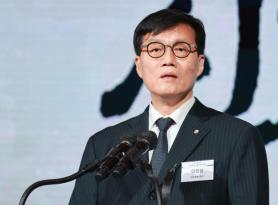
The Bank of Korea reduced the policy rate to 2.50 percent, its fourth cut in just seven months. The move comes amid mounting evidence of a slowdown, including a 0.2 percent contraction in gross domestic product during the first quarter, and follows a revised 2025 growth forecast of just 0.8 percent — down sharply from an earlier estimate of 1.5 percent.
The bank’s downgraded outlook is notably more pessimistic than that of the Organization for Economic Cooperation and Development, which projects 1.5 percent growth, and the International Monetary Fund’s estimate of 1.0 percent.
The timing of the rate cut — less than a week before a hotly contested presidential election — underscores the urgency of the economic challenges facing policymakers.
Weighed down by sluggish domestic consumption and a slowdown in construction investment, the South Korean economy has struggled to regain momentum even as inflation pressures have eased.
Adding to the headwinds are deteriorating export conditions, fueled in part by rising trade tensions with the United States.
The Bank of Korea’s decision reflects a growing consensus among officials that additional monetary stimulus is needed to bolster confidence among businesses and consumers.
"The economic conditions have turned out worse than expected, with various institutions continuously revising down their growth outlook for Korea," said Cho Young-moo, an economist at LG Economic Research Institute.
The current easing cycle began last fall, when the BOK delivered back-to-back 0.25 percentage point cuts in October and November — its first consecutive reductions since the 2008 global financial crisis. After holding rates steady in January, the bank cut again in February before pausing in April.
A stabilization in the Korean won has also given policymakers more leeway to ease. The currency, which had weakened sharply to nearly 1,490 to the dollar in April amid peak trade war fears, has since recovered to around 1,360.
Still, concerns about the side effects of aggressive monetary easing remain. Property prices and household debt have both shown signs of acceleration, with major banks reporting an increase in household lending of 3.4 trillion won (about $2.5 billion) in May alone.
The widening interest rate gap between South Korea and the United States — now at 2 percentage points — also raises the risk of capital outflows and renewed currency pressure, potentially undermining the central bank’s policy goals.
Cho cautioned that the impact of the latest rate cut may be muted. “Lending conditions remain tight,” he said. “It’s questionable whether households and businesses can significantly increase borrowing just because rates have fallen a bit.”
Copyright ⓒ Aju Press All rights reserved.




